Definition: Business activities refer to all the economic activities, whether directly or indirectly related to making the goods and services available to the consumer and ensure profit earning through customer satisfaction. All the business activities depend on each other to ensure constant process and cannot serve the purpose of customer satisfaction solely.
Example: A farmer produces tons of pulses and cultivates it to sell it in the market. He doesn’t have a warehousing facility to store his yield. The lack of storage leads to crop destruction.
Content: Business Activities
Classification of Business Activities
Other than the production of goods and services, there are numerous other activities which can be termed as business activities.
It can be broadly classified as follows:
Industry
The industry refers to all the activities concerned with the extraction, processing and production of goods and services to generate revenue. Industries are majorly categorised under three heads:
Primary Industries
The enterprises engaged in the generation of raw material through extraction or breeding of natural resources, whether living or non-living are listed under primary industries.
For example; Breeding of sheep for wool, mushroom plantation, salt extraction, coal mines
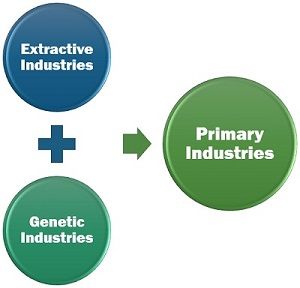 Based on the process through which the natural resources are acquired, the primary industries are divided into the following two types:
Based on the process through which the natural resources are acquired, the primary industries are divided into the following two types:
- Extractive: Industries which extract the resources already available with nature.
For example; The petroleum industry, iron ore mines, the fishery industry, etc. - Generic: Industries involved in the rearing of cattle, animals and birds or growing of plants, flowers and vegetation to sell them or their products.
For example; Sunflower farms, dairy farming, horticulture
Secondary Industries
Secondary Industries procure the natural resources produced by primary industries as raw material to create different goods to meet customer requirement.
For example; Road contractors, bag manufacturing industry, medicine manufacturing
The secondary industries are bifurcated into two streamlines:
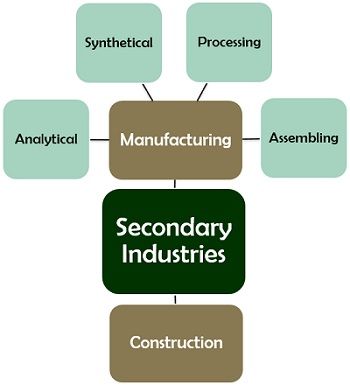
- Manufacturing: Industries engaged in the production and creation of goods to convert raw material into the usable form are known as manufacturing industries. There are four types of manufacturing industries:
- Analytical: Analytical industry focuses on extracting different products from the specific raw material.
For example; Extracting LPG from natural gas - Synthetical: These industries concentrate on combining various ingredients to create a new product.
For example; the perfume industry - Processing: When the raw material is treated at different stages to acquire the final product, it is known as processing.
For example; The salt processing unit - Assembling: Assembling refers to the compilation of different products to develop a new product.
For example; Mobile phones manufacturing
- Analytical: Analytical industry focuses on extracting different products from the specific raw material.
- Construction: Building up of immovable goods using various goods as raw material to serve the consumer’s utility is called construction.
For example; Construction of dams from bricks, cement, iron, etc
Tertiary Industries
The tertiary industry refers to the service industry. It includes all kinds of services provided to consumers to satisfy their needs and requirements.
For example; Schools, hospitals, hotels, banks, etc.
Commerce
Commerce is the means of making the product available to consumers. It works parallel with the industries and can be seen as a medium between the enterprises and the consumers.
E-commerce: E-commerce refers to the trading of goods and services through the online market over the internet. Commerce is further sorted into two principal heads:
Trade
Only the production of products and services is not enough until it reaches the end consumers. Trade is the channel between the industries and the consumers, that is responsible for the distribution of products and services.
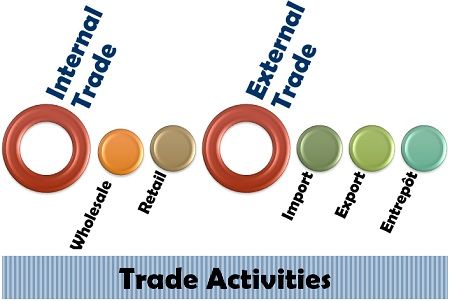 It is basically of two types:
It is basically of two types:
- Internal Trade: Internal trade or domestic trade makes sure that the goods and services are traded within the geographical confinement of a country. It is further divided into the following two categories:
- Wholesale Trade: Purchasing the products in bulk quantity from the manufacturer and selling comparatively in small amounts to the retailer at a marginal profit is known as wholesale trade. Wholesalers majorly deal with limited products.
For example; Wholesale gourmet store, aluminium partition wholesaler - Retail Trade: The retailer buys goods in comparatively smaller quantity from the wholesaler, to be sold further to the customers at MRP (Maximum Retail Price) or an appreciated price.
For example; Apparel shop, furniture Showroom
- Wholesale Trade: Purchasing the products in bulk quantity from the manufacturer and selling comparatively in small amounts to the retailer at a marginal profit is known as wholesale trade. Wholesalers majorly deal with limited products.
- External Trade: When goods and services are traded outside the geographical confinements of a country, it is termed as external trade or foreign trade. External trade can be classified as follows:
- Import: Import refers to procuring goods and services from the other country.
For example; India imports lead from Nigeria - Export: Selling or supplying of products and services to the other country is termed as export.
For example; Spain exports porcelain tiles to India - Entrepôt: Purchasing goods from one nation and selling it to another country is called entrepôt.
For example; Club factory.in buys products from all over the world and sells them universally
- Import: Import refers to procuring goods and services from the other country.
Auxiliaries to Trade
To simplify the trading process, there is a need for additional activities which are termed as auxiliaries to trade.
Such services synchronise and manage the buying and selling process for both the sellers and the buyers.
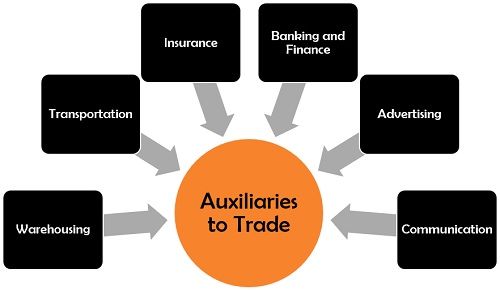 The various kinds of auxiliaries to trade are mentioned below:
The various kinds of auxiliaries to trade are mentioned below:
- Warehousing: To store the goods produced in bulk quantities, to keep the products safe from damage and to maintain a regular supply of goods in the market is known as warehousing.
For example; Cold storage warehouse to keep ice-creams fresh - Transportation: The process of moving the finished products from the industry or production unit to the marketplace for easy availability to customers is known as transportation.
For example; Goods train transports a variety of goods on a large scale - Insurance: Insurance of goods provides financial security against the risk of loss or damage caused to the products at the time of transport or otherwise.
For example; Fire insurance of the crackers stored in a warehouse - Banking and Finance: There are financial institutions that provide financial leverage to the trading firms in the form of business loans and other banking services. Such as fund transfer, cheque payments, current account transactions, etc.
For example; Commercial banks - Advertising: To introduce and generate product demand in the market, advertising the product through newspapers, radio, television, internet, hoardings, etc. is essential.
For example; Hoarding advertisement agencies - Communication: Communication implies the service facilitating the exchange of opinion and information between two or people.
For example; Internet service provider
Conclusion
With the growing population, the demand for merchandise is rising tremendously. To satisfy these demands for ensuring customer satisfaction, business activities play a significant role.
The world is experiencing an era of digital evolution. Thus the concept of e-commerce has developed as a part of business activities.
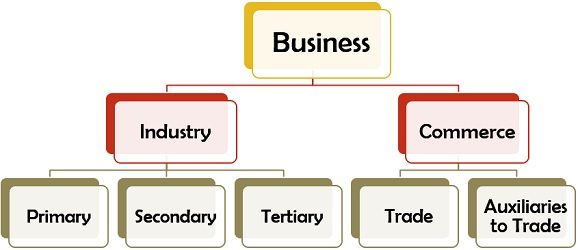
Blessing says
It very interesting I love it